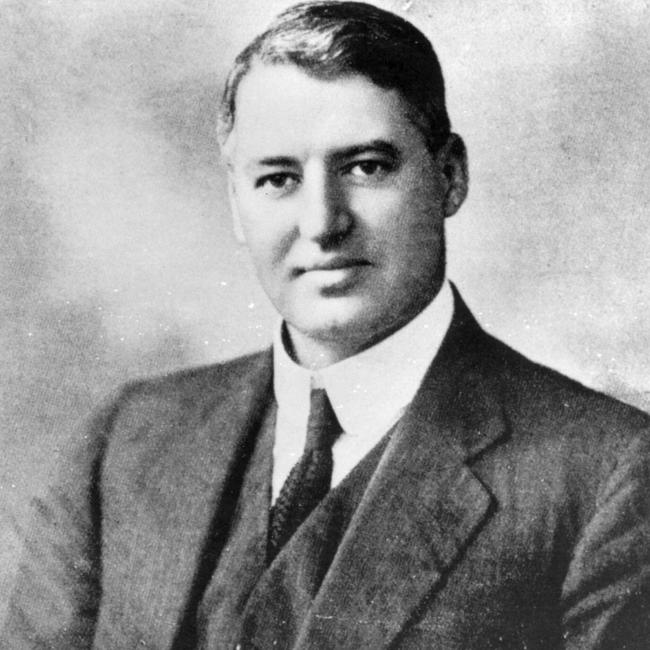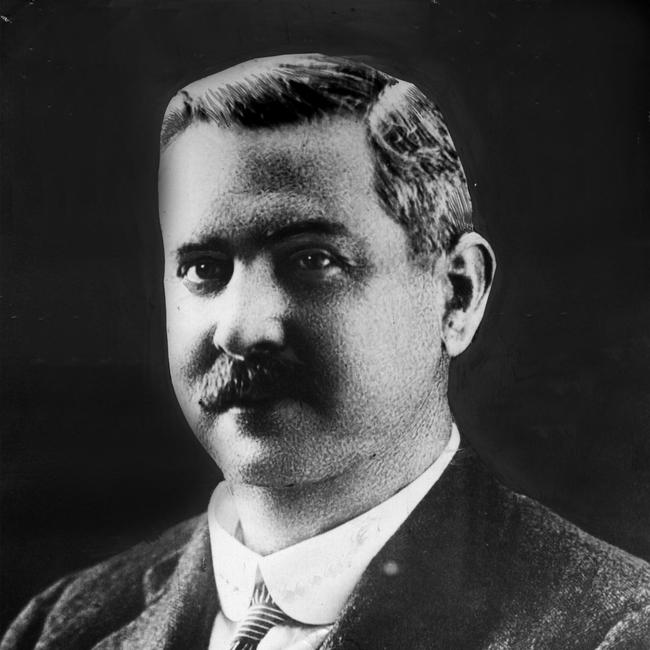Peter Gleeson: Queensland needs a fresh referendum on re-establishing an Upper House
The stench is overwhelming. Integrity scandals, public service dysfunction, union extortion, secret private emails … Queensland needs a fresh referendum on re-establishing an Upper House, writes Peter Gleeson.
Peter Gleeson
Don't miss out on the headlines from Peter Gleeson. Followed categories will be added to My News.
You’ve got to hand it to former political leviathians, Labor premiers T.J. Ryan and “Red Ted’’ Theodore.
They were true visionaries, in every sense of the word. On Wednesday, we mark the 100th anniversary of the day the Labor Party abolished Queensland’s Upper House, and it was T.J. and “Red Ted’’ that pulled it off. They ignored a referendum which soundly rejected the plan, and had two ill-fated goes before duping the Governor into stacking the Upper House with Labor MPs, who then committed political suicide by voting themselves out of office.
The Upper House is where checks and balances are designed to keep the government of the day honest and accountable. Unfortunately for Queensland, those two words “honest and accountable’’ are not part of the current Labor Government’s vocabulary.
If only T.J. Ryan and Red Ted Theodore knew that exactly 100 years on from their fateful decision, their very own Labor brethren were making a mockery of abolishing the place designed to keep them honest.
The stench is overwhelming. Integrity after integrity scandal, public service dysfunction, union extortion, secret private emails, taxpayers funding court action to stop reports being aired publicly, an obsession with secrecy … they are all part of modern day politics in Queensland.
That’s why we need a fresh referendum on re-establishing an Upper House. That doesn’t mean more politicians. Just cut the current House from 93 MPs to 60 and make the Upper House 33 members. Electoral re-distributions could easily fix that problem.
The Queensland Parliament is unique among Australian state parliaments as it is unicameral, that is, it only has one chamber.

Queensland’s parliament was the only colonial parliament, pre-1901, to start with two chambers and is now the only state parliament to have just one chamber, following the abolition of the Legislative Council in 1922.
Unicameral legislatures are uncommon in Westminster parliamentary democracies. The standard parliamentary model in Westminster democracies includes two chambers consisting of a lower house and an upper house of review.
In Australia, only Queensland and the two territories have just one parliamentary chamber. The Federal Parliament and all other states have two.
In Queensland, throughout the Legislative Council’s existence, numerous attempts were made to limit or modify its power.
Early criticism included an 1861 letter published in the Courier Mail which stated: [The Legislative Council] is a contemptible instrument of bad government, and causes much unnecessary expense. Let the Upper House be done away with, and the number of members in the Lower House increased.’’
In 1915, the first long-term Labor government came to power in Queensland. This set the stage for a confrontation between Queensland’s two houses of Parliament, as the Labor Party had been opposed to the Legislative Council from its inception and the Labor Premier, T.J. Ryan, advocated strongly for its abolition.
The early days of the Ryan government were marked by the frustration of dealing with a hostile Legislative Council.
During Ryan’s first term, approximately 800 Bills were rejected or drastically amended by the Legislative Council.
The Legislative Council rejected many of the Ryan government’s key pieces of legislation, including bills addressing major reforms that the government had campaigned on during the election and believed it had a mandate to act upon.
Premier Ryan introduced a Bill to abolish the Legislative Council in 1915. He argued that nominated legislative councils were ‘relics of feudalism’. The Bill passed through the Legislative Assembly, but was rejected by the Legislative Council.
The Legislative Council argued that the destruction of the bicameral system in Queensland ‘would fatally prejudice the standing and rights of this State, reducing it below the level of all the others, and dislocating the provisions by which due representation in the Federal Parliament is secured in Queensland.’
The campaign to abolish the Upper House was ill-fated from its inception. As a cost reduction measure, Cabinet decided to hold a referendum on the same day as the Federal election in 1917.
The Federal election apparently distracted many voters and government members from the Legislative Council abolition question.

The legality of the referendum was questioned and the wording of the question caused confusion as the public had to vote against the Legislative Council by voting for the Bill to abolish it. The referendum was easily defeated, with 179, 105 Queenslanders voting against the abolition of the Legislative Council, and 116 196 voting for its removal.
While the campaign had been troubled, the result showed that most Queenslanders were not ready to abolish the Legislative Council.
Following the referendum, two further attempts were made to abolish the Legislative Council through legislation in 1918 and 1919.
The hopes of the Labor-controlled Legislative Assembly were buoyed by the appointment of 13 new Labor members to the Legislative Council in 1918 and an additional three in 1919.
Despite these 16 appointments, the Government still lacked the numbers in the Legislative Council, and the bills were defeated.
The Governor, Sir Hamilton Goold-Adams, refused to make any further Labor appointments to the Legislative Council.
When Goold-Adams retired in early 1920, the Speaker of the Assembly, William Lennon, was appointed as Lieutenant-Governor on Goold-Adams’s strong recommendation.
On February 19, 1920, Lennon appointed 14 more Labor Members to the Council, giving the Labor government (now led by Edward ‘Red Ted’ Theodore) a majority in the Legislative Council for the first time.
The abolition of the Legislative Council was an important issue in the election of 1920. Theodore argued an election victory fought on the abolition issue would constitute a mandate for change.
Theodore won narrowly and with the numbers they went ahead and abolished the Upper House. Who needs a gerrymander when you can stack the voting like that?
Former federal Labor leader Mark Latham is now part of the NSW Upper House, representing One Nation.
He says the best part of a chamber of review is that it “provides scrutiny to legislation and a comprehensive committee system which scrutinises all aspects of the executive government, including budget estimates, bills and general issues. The executive still get away with bad stuff but I’m guessing an active Upper House reduces that by at least 50 per cent.’’
I reckon there’d be two referendums that would get up right now in Queensland. One to introduce daylight savings and another for an Upper House.
The Labor Government needs to be reined in. It’s officially out of control.
Read related topics:Integrity crisis
